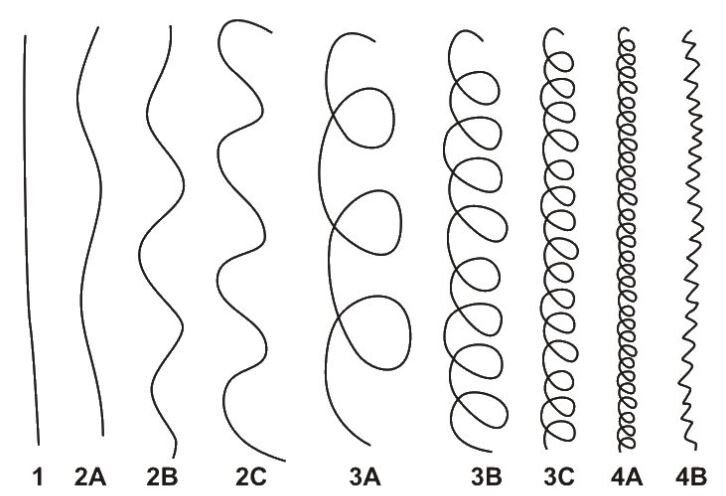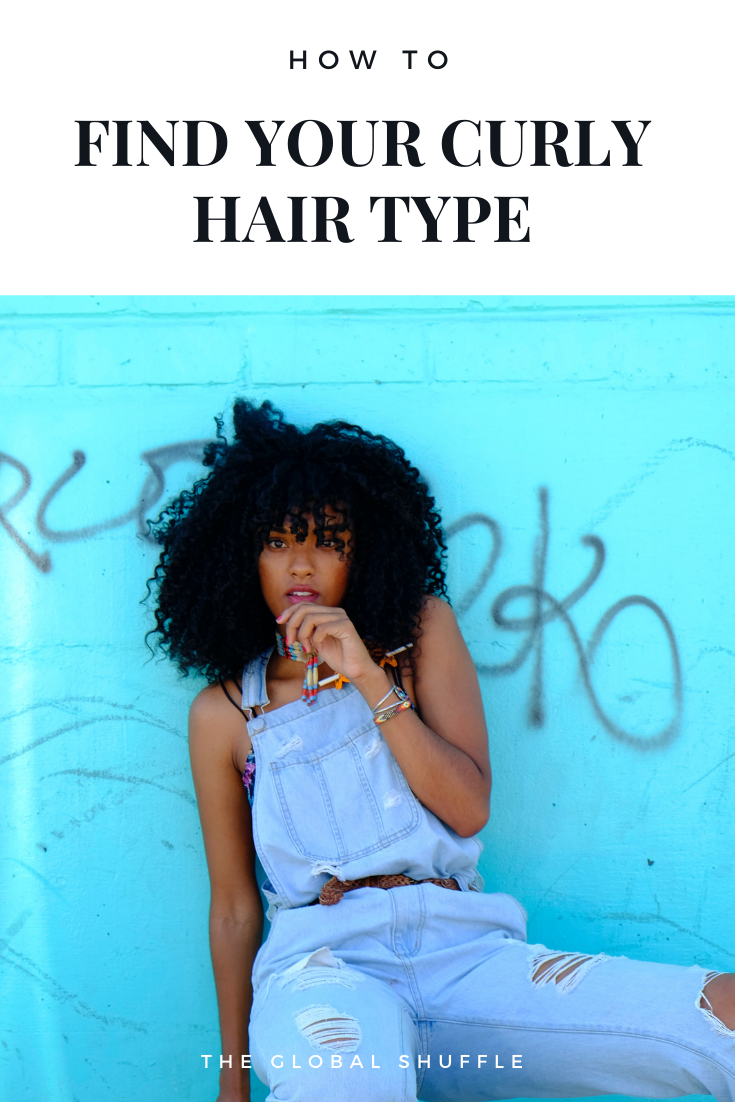How To Slay Your Curly Hair Routine Part One: Figuring Out Your Curly Hair Type
As a long-time fan of the curly girl method, I’ve tried and tested quite a few things over the years to figure out what works best for my hair. Here’s how I did it.
With a curly hair routine, there’s no one size fits all.
Hair is almost as unique as a fingerprint - no two heads are exactly the same, which means no two routines will be exactly the same, but with a bit of trial and error, you’ll be on the way to finding your perfect routine that leaves your curls feeling thick, full and bouncy in no time.
There are a few factors you need to determine to work out what routine and products will work best for you, but stay with me! A few extra steps at the beginning will make an enormous difference to the end result.
To break it all down into bite-sized pieces, I’ve divided it into two parts - part one is all about figuring out your hair type so you know what products will work for your hair, and the second part will be all about the routine itself.
Here’s what you need to know.
Step 1: what’s your curl type?
To determine what methods and products will work best for your hair, you’ll need to know what kind of hair you have and how quickly your hair absorbs moisture.
For example, if you have thick hair that absorbs moisture quickly, you’ll want to start with heavier products to make sure it stays moisturized for as long as possible - weaker conditioners with lighter oils, like coconut oil, likely won’t add the moisture you need. On the flip side, people with fine waves will want to use weaker products so their hair isn’t weighed down by heavy creams.
Figuring out your curl type basically means looking in the mirror and comparing your locks to the pictured ones below. Curl patterns range from 2A to 4C. The number refers to the type of curl, while the letter refers to the tightness of the coil.
Curl type 1 is straight, type 2 is waves, type 3 is spirals and 4 is kinks and coils. It’s totally normal to have a mixture - mine is a combination of 3A, 2C and 3B.
Why is this important?
It will help determine what kinds of products you use. Type 2 usually lacks volume, so people with Type 2 hair would want to stay away from heavier conditioners, creams and co-washing (washing your hair with conditioner only) - it will weigh the hair down too much, take out any volume, and possibly flatten the curls. I found Deva Curl’s no poo was too much for my fine hair - it’s very thick and creamy and much better suited to Type 4 hair.
Type 3 and 4 hair can have a lot of volume so thicker creams and leave-in conditioners often work for this curl pattern
Type 2
Type 3
Type 4
Type 2: Often classified as wavy hair, Type 2 hair is often flatter at the roots and gets curlier from the ears down. It can be prone to frizz and sometimes struggles to hold its shape. To help lift the shape and add body, lighter products such as mousses and gels can be used. Oils tend to weigh it down or make it appear stringy, so opt for less styling products.
Type 3: This curl pattern usually starts fairly close to the scalp and falls in coils or spirals. People with Type 3 often have more volume, which means they can use heavier products, such as styling creams and gels.
Type 4: Coily hair has the most natural volume, but suffers from dryness. It seems robust, but it’s actually very delicate because of the tight curl pattern and fewer cuticle layers. People with Type 4 hair can usually use very heavy butters and oils to help lock in moisture and avoid tangles. Adding oils, such as coconut or castor oil, before wash day can help maintain scalp health, and leave-in moisturizers can help ensure hair stays hydrated for longer.
My hair on wash day
My hair on day three - it’s a bit of a mix
Step 2: What’s your hair type?
The next thing you’ll need to know is your hair type - the thickness of your strands and how it absorbs water, also known as porosity.
To start with, roll a strand of your hair between your fingers. If you can really feel it there and there’s no ignoring it, you have thick strands. If you can kind of feel it but could forget it’s there, you have medium strands. If you can’t really feel it at all, you have fine strands. Thicker strands can often take a lot of moisture without becoming flat and weighed down. Heavier products will often drown finer strands and leave them lifeless.
Next, you’ll need to work out your hair porosity - arguably the most important factor when it comes to figuring out your curly hair routine.
There are three levels of hair porosity:
Low: This means the hair cuticles are tightly bound and repels water, products and dyes. It usually takes a long time to dry. Water might bead on top of your head in the shower instead of sinking in, dyes might be ineffective unless left for a long time, and conditioners sometimes just don’t work.
If this sounds like you, you’ll need to add a little heat to your curly hair routine to open up your cuticles and get moisture in. You can do this by covering your hair in conditioner and covering it with a microwaved heat cap - kind of like a shower cap - to ensure the moisture sinks in. Leave the cap on for about 20 minutes before you wash the conditioner out.
Medium: This kind of hair is usually the easiest to manage - it holds on to moisture but may become dry as it gets closer to wash day. It will likely take a few hours to dry, but not a full day. Medium porosity hair doesn’t need anything special to retain moisture - if this sounds like you, your curl type and strand thickness will largely determine your curly hair routine.
High: Where low porosity hair struggles to absorb moisture, high porosity hair absorbs it easily but struggles to retain it. It will often dry quickly, but become brittle fairly soon after wash day. Hair that has been dyed or heated excessively is often high porosity because the cuticle has been damaged (don’t stress, it’s fixable! You’ll need to let the damage grow out and get regular trims).
People with high porosity hair will need lots of moisture, so you’ll want to deep condition with every wash. You can also use a microwavable cap to make sure the moisture sinks in, and use heavier products with natural oils and butters.
Not sure what your hair porosity is? Do not fret! Determining your hair porosity is easy - you need a glass or bowl of water and a fresh strand of hair. Put the strand in the water and wait about 10 minutes. If the strand floats, your hair is low porosity. If it hovers under the surface, you have medium porosity hair. If it starts to sink towards the bottom, you have high porosity hair.
Step 3: Finding the right Products
The right products will very much depend on the type of hair you have, but you have to start somewhere! I recommend getting a run-of-the-mill hydrating shampoo and conditioner, a deep conditioner, a wide-tooth comb or a tangle teaser (I love them!), one styling product and a microfibre towel (or cotton t-shirt) to dry your hair with (top tip: a regular towel will make your hair frizzy).
For a mixture of Type 2 and 3 hair, I use Function of Beauty or Shea Moisture for cleanse and condition, and Not Your Mother’s Kinky Moves Curl Defining Hair Cream to style.

















